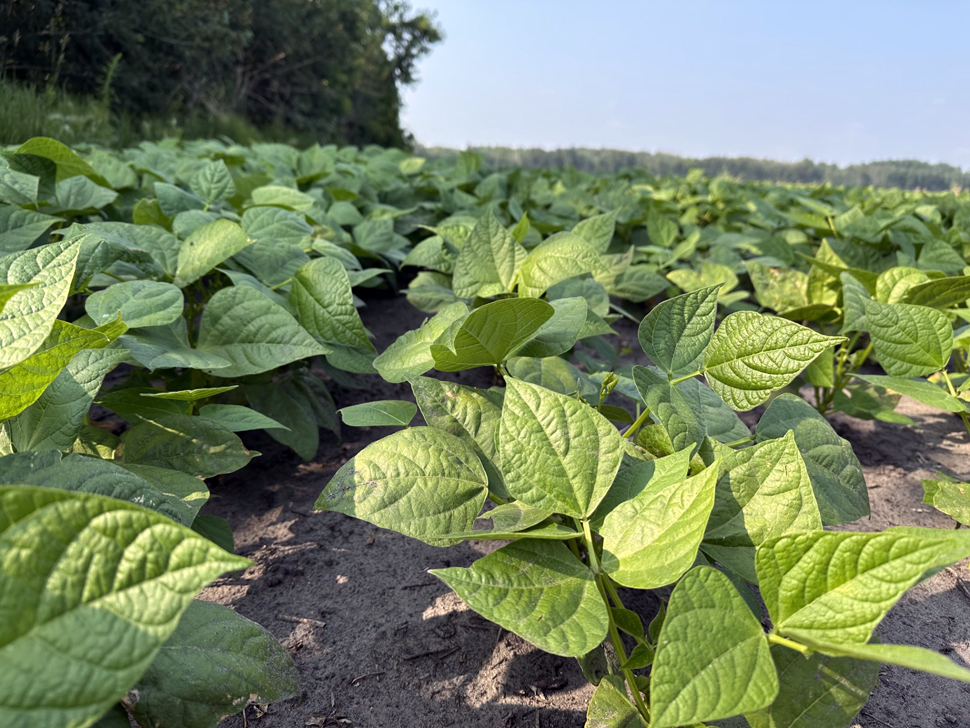A spokesperson for Manitoba Agriculture says it remains to be seen what sort of damage was felt on fields from last week's hail.
Hail was reported in numerous locations across the province, and Oilseed Specialist Sonia Wilson says producers will typically leave those crops for five to seven days, just to see how they rebound, before assessing them for hail damage.
Manitoba's weekly crop report says rain and thunderstorms rolled through the province, but precipitation amounts varied depending on location. The wettest location in the eastern region was Sprague at 38.8 millimetres (mm), in the central region was Bagot with 37.7 mm, in the Interlake was Gimli with 33.3 mm, in the southwest was Shilo with 30.8 mm, and in the northwest was Inglis with 17.5 mm. As for the driest locations, in the eastern region was Prawda with 0.5 mm, in the central region was Holland with 2.2 mm, in the Interlake region was Taylor's Point with 0.4 mm, in the southwest was Birtle with 1.0 mm, and in the northwest was Swan Valley with no rain.
Regional Comments
Southwest - Another week of hot, dry conditions stressed the crops, but rain later in the week provided some relief. Most cereal crops have been sprayed with fungicide, and producers continue to apply fungicide to canola, with added attention to hail-affected areas.
Northwest - High temperatures again this week helped crops progress and contributed to dry conditions in some areas. Many stations remain well below normal precipitation amounts. Areas with lighter soils are starting to show the effects of moisture stress.
Central - Normal precipitation levels from May 1st to July 13th are between 167.2 and 212.1 mm. The wettest location this season has been Winkler with 175 mm or 85 per cent of normal. The driest location has been Portage with 59 mm or 31 per cent of normal.
Eastern - Rainfall accumulations varied across the eastern region last week. The forecast for the coming week is for cooler temperatures and more shower activity. Producers continue to hope for more rain to help crops mature.
Interlake - Minimal rainfall throughout the week across the Interlake region. The highest amount of rainfall was recorded in Gimli at 33.3 mm. All other areas across the region saw less than 10 mm. Adequate moisture is still needed for crop maturity and development, with most crops struggling due to dry conditions in the North Interlake.
Wilson has updated crop development around the province. She says winter wheat and fall rye are in the grain fill stage, while majority of corn fields range from V8 to tasseling. The earliest seeded spring wheat is reaching grain fill stage, while barley and oats range from head emergence to grain fill stage. Wilson says fungicide applications for Fusarium Head Blight are close to complete. She adds spring wheat quality is mostly rated as good, with 10 per cent of the crop being reported as fair across the province.
As for oilseeds, Wilson says there is a wide range of canola growth stages due to a long seeding window. She notes the late seeded canola is at cabbage to early bolting, while the earliest seeded canola is fully podded. Fungicide applications in canola are ongoing. Flax is flowering with the earliest seeded fields with bolls. Sunflowers are reaching R1 to R3 stage.
When it comes to pulses and soybeans, Wilson says field peas are flowering in most areas, with pods in the most advanced fields continuing to develop. Early seeded soybeans are in the R1 to R2 stage, with later-seeded soybeans at V5.
Wilson says pastures responded positively to the rainfall over the past week, although precipitation was scattered and inconsistent. She adds producers had a favourable week for harvesting good quality feed, with yields ranging from average to below average. Wilson explains that older stands and those dominated by grass produced significantly less. She notes above-average hay yields have been reported in disperse pockets in the northwest region where they have received significant moisture during the growing season. Alfalfa weevil feeding has also impacted hay fields.
In terms of livestock, Wilson says most cattle in the pasture are in good condition, though fly pressure continues to be a concern. She adds dugout water levels are low in many areas due to limited moisture, though they remain sufficient for now.
As for other insect concerns, Wilson says there have been reports of pea leaf weevil. As well, grasshoppers are being monitored, but there are no concerns at this point. In terms of disease, Wilson says there is nothing to report at this point other than Fusarium sprays coming to a close, as well as sclerotinia fungicides.
